Welcome to the Year of the Dragon! The dragon is the only mythical creature in the Chinese zodiac, standing out among a sea of rabbits, tigers, monkeys, and other familiar animals. As we shift into a new lunar year, we’re looking at the roles that dragons play in folklore from around the world.
Why do people from so many different cultures and countries tell stories about dragons? How could so many different civilizations separately create this make-believe beast? It might help that the definition of “dragon” is fairly loose. Do dragons have two legs or four? Are they snakelike or big and bulky? Do they fly or swim? And what about breathing fire? It really depends on who you ask. Some dragons are evil or harmful, hoarding wealth and damaging communities. Others are almost the opposite: guardians of the land who share their wisdom and powers with the lucky few who deserve them.
Still, despite the many differences we see in dragon legends from around the world, they might share a common source of inspiration.
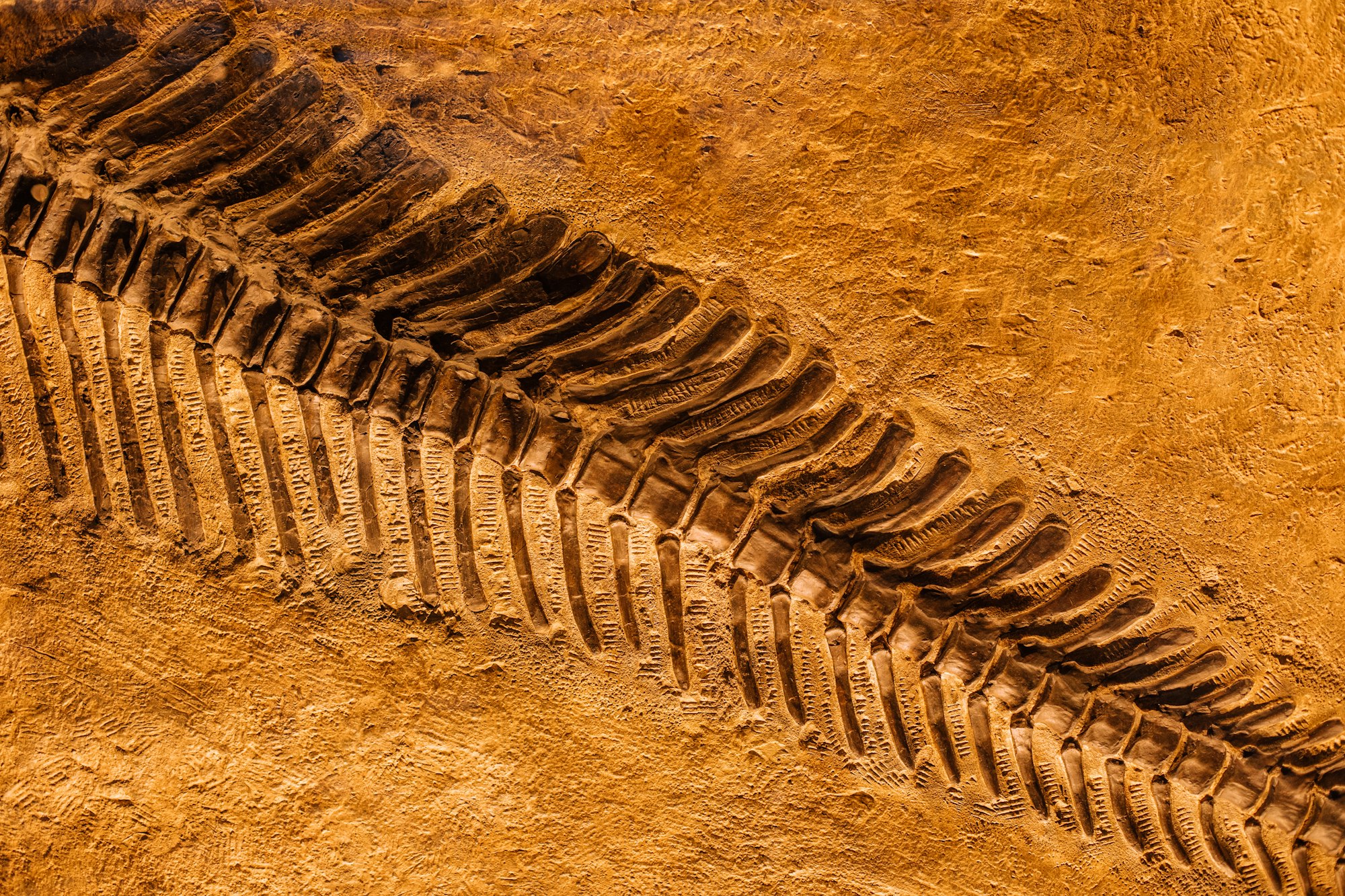
The Bones of a Legend
Riddle me this: what do you call a big, scary reptile from the distant past? If you’re a medieval peasant (congratulations on discovering the internet, by the way), you’d call it a dragon. But if you’re a modern paleontologist, you might call it a dinosaur.
Just because the word “dinosaur" didn’t exist until the 19th century doesn’t mean that nobody had ever discovered dinosaur fossils before. If you uncovered giant, unfamiliar bones on your property, what would you think? Most likely you’d think that some kind of giant, powerful creature, hitherto unfamiliar to you and your family, existed somewhere out there in the world. And you’d be right—just several million years too late.
One anthropologist, Dr. David E. Jones, has a different theory about how dragon legends “‘hatched.”’ He thinks dragons embody traits of all of the predator and scavenger species that people most fear: snakes and crocodiles, big cats, birds of prey, whales, maybe even natural disasters. Jones thinks the fear and respect of dragons is evolutionary, built into our human minds and instincts.
Other experts think that the common traits of different dragon stories prove that ancient civilizations were far more interconnected than we realized. Similar stories could have spread between groups, adapting over time to fit the values and beliefs of local populations. It’s not that different from the way that urban legends spread today. How many towns have eerily similar legends about phantom hitchhikers or haunted bridges?
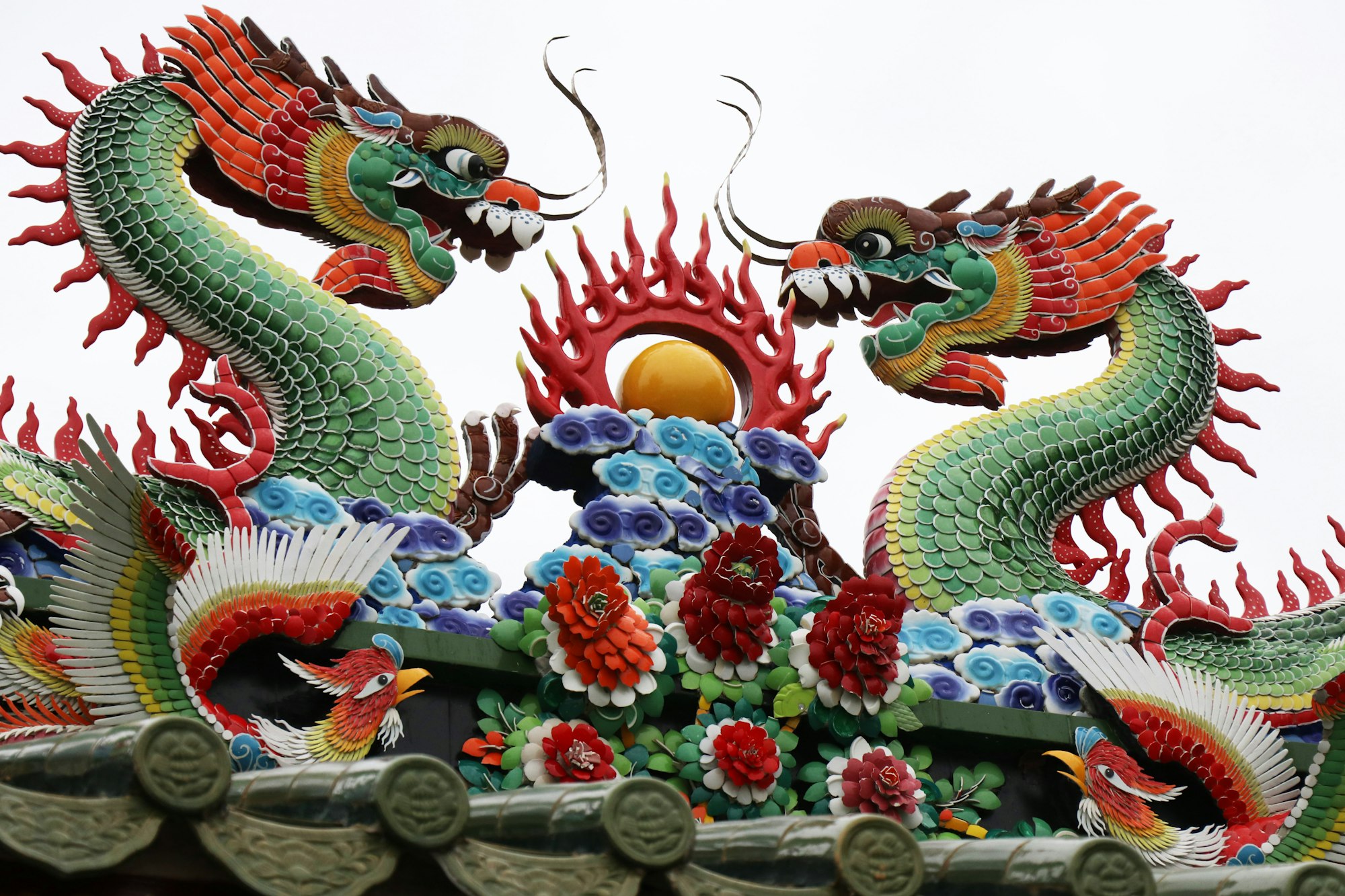
Dragons in Chinese Mythology
Since this is the Year of the Dragon, Chinese mythology seems like the perfect place to start our journey. China is also home to some of the most ancient dragon tales, going back over 5,000 years. The image of a Chinese dragon (also known as a loong) can be found all over Chinese cultural celebrations, from dragon boat races to dragon dances at Lunar New Year. They adorn temples, kites, traditional clothing, and so much more. We have good news for anyone who’s really hoping for things to look up this year: the Year of the Dragon is considered one of the most auspicious in the zodiac. This may just be your year.
Dragons from China have long snakelike bodies and are traditionally associated with bodies of water and rain. They also fly, despite lacking wings. Traditionally, they use their powers for good, protecting the land and providing a good harvest. One famous Chinese legend, sometimes called “The Dragon’s Pearl,” exemplifies these helpful traits.
In the tale, a hungry young boy and his mother live in a kingdom ruled by a greedy emperor. One day, the boy finds a patch of grass that keeps growing back no matter how often he cuts it. He digs beneath the patch of grass and finds a massive pearl! He hides the pearl in a sack of rice… and wakes up the next morning to an amazing surprise! The rice had multiplied overnight until the sack overflowed. When the boy and his mother become prosperous, sharing their newfound wealth with others, the emperor decides to take the pearl for himself. To keep him from getting his hands on it, the boy swallows the pearl and turns into a dragon! According to the legend, he now serves as a guardian, protecting the land.
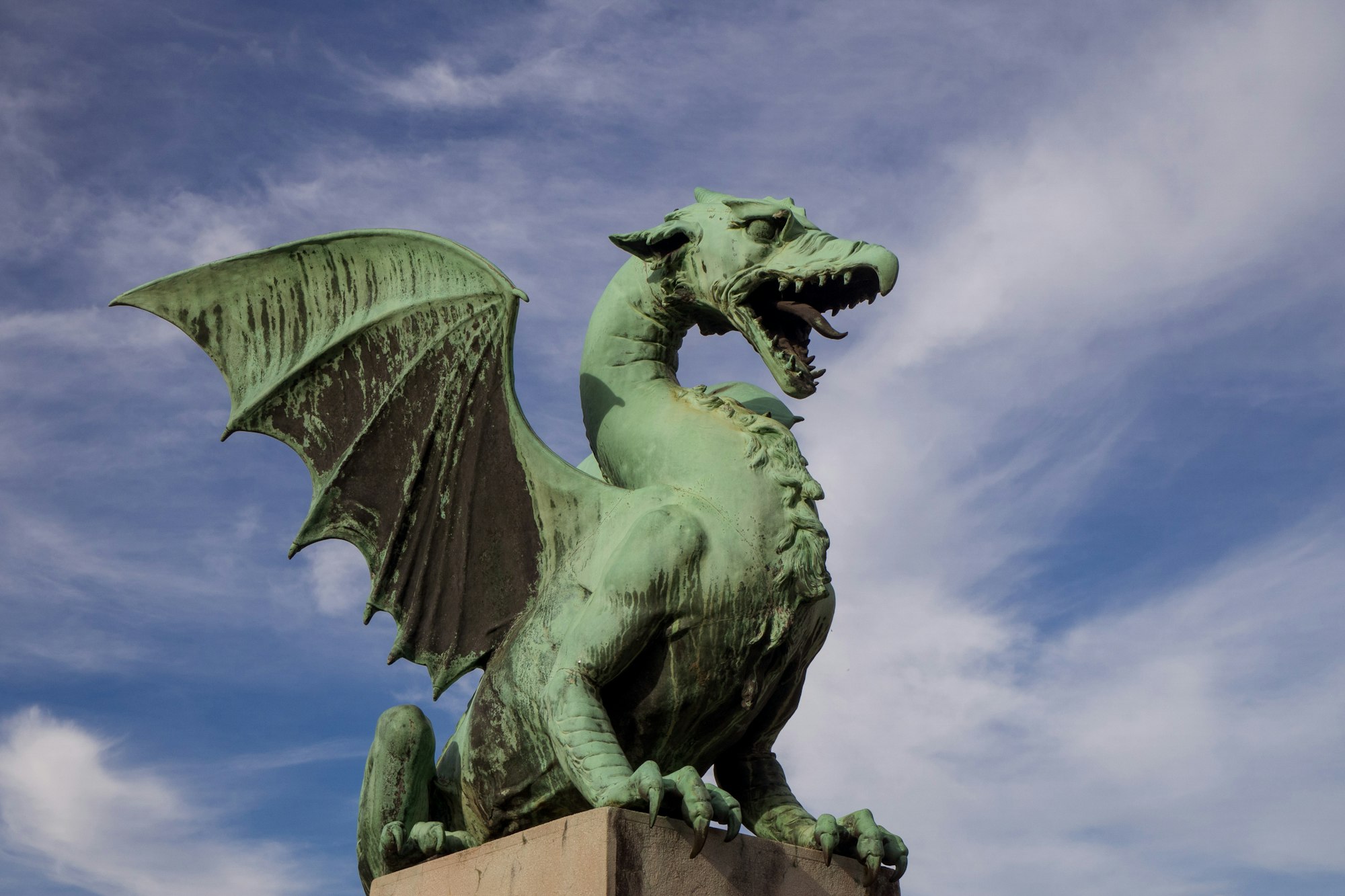
Dragons in British, Germanic, and Norse Mythology
While Chinese dragons may protect land from greedy, corrupt rulers, the dragons we might be more familiar with are the exact opposite. The dragons in Germanic folklore often ARE the greedy, corrupt ruler, hoarding wealth and stealing resources from the townspeople. Typically, a hero must slay the dragon to save the kingdom.
One of the most famous stories of this kind is that of Saint George and the Dragon. In this story, the dragon terrorizing the village demands gifts from people. First, he wants farm animals to eat and trinkets and jewels to collect. This is manageable… at first. When the livestock runs out, he asks for human sacrifices. Incredibly, the villagers follow his orders until he asks for a princess as tribute. That’s when Saint George shows up, saves the damsel in distress, and kills the dragon. Some people think the dragon in the story represents the Roman emperors that had ruled over England.
Beowulf slays a similar dragon that’s terrorizing Geatland in the famous epic of the same name. Poor Beowulf doesn’t get the happy ending that George does, though—the dragon’s venom slowly kills him. The dragon from Beowulf and a legendary dragon named Fafnir in Norse and Germanic myth both keep huge hoards of treasure. They helped inspire Smaug, the dragon in J.R.R. Tolkien’s The Hobbit!
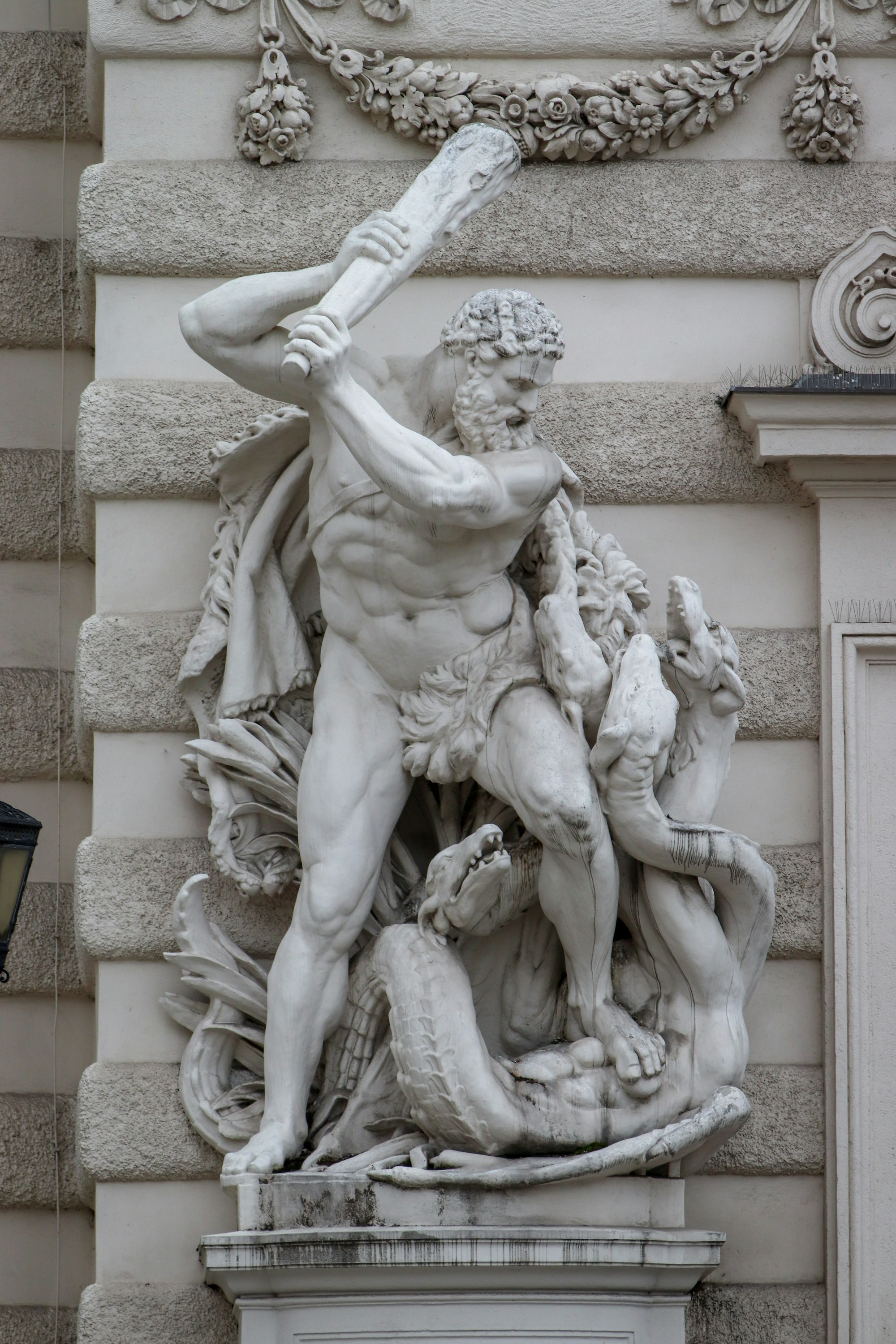
Dragons in Greek Mythology
Where did we get the word “dragon” anyway? It all started with an ancient Greek word, drakōn. The dragons in Greek myths tended to be serpentlike and sometimes had multiple heads. We might think of them more as “sea monsters” than dragons. In many stories, dragons guarded something powerful or expensive, but it’s not exactly a personal "horde" of treasure like in British or Germanic myths. Instead, the dragons are more like security officers who’ve been placed there by a god or powerful person.
For example, to claim the Golden Fleece, Jason had to defeat a dragon that never slept. In some versions of the story, the witch Medea put the dragon to sleep using magic so that Jason could get his hands on the fleece. In others, Jason simply slew the dragon. Hercules also slew a dragon as one of his Twelve Labors. This one guarded a tree bearing golden apples… and it had over a hundred heads. If you look for the constellation Hercules in the night sky, you’ll find the head of Draco the dragon under the hero’s foot.
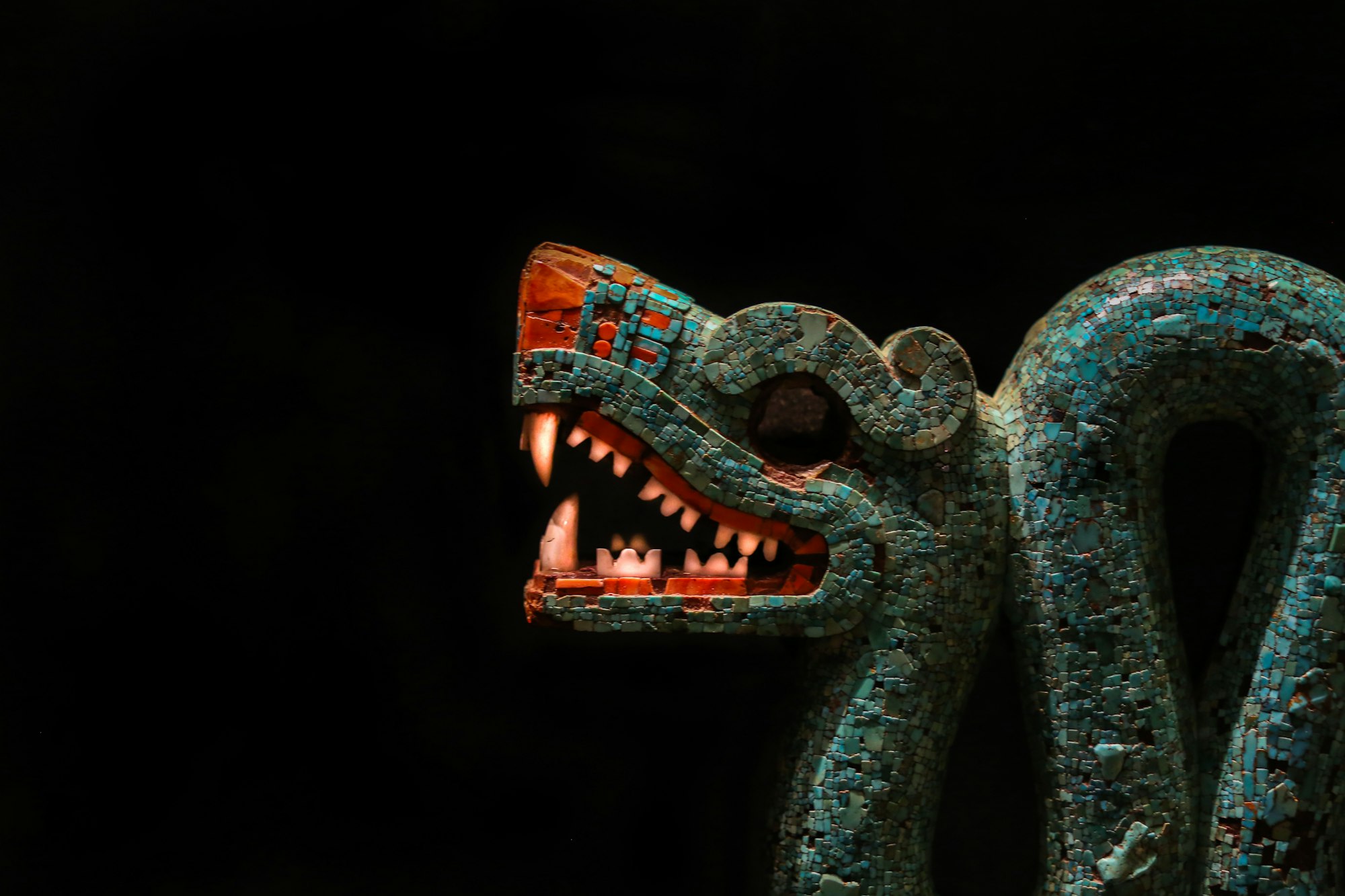
If It Walks Like a Dragon and it Talks Like a Dragon...
If you look outside Eurasia, you’ll still find many legends about large serpent-like creatures with supernatural powers. With dragons coming in so many different forms, these creatures might just qualify as dragons, too.
The creation legends of the aboriginal people of Australia are often called “Dreaming.” In these stories, creation isn’t something relegated to the “past” but instead takes place “everywhen." One type of powerful serpent called the Wagyl or Waugal was said to have shaped the landscape with its large body, creating hills, valleys, and riverbends wherever it slithered. The Noongar people say that when water appears murky and disturbed, the Wagyl may be swimming there. Don’t disturb it, too!
Feathered serpents play a massive role in Mesoamerican mythology. The most famous of all is Quetzalcóatl, an Aztec god who specialized in innumerable areas from creation to death and resurrection, not to mention agriculture, the calendar, learning, the sun, and the wind. In one legend, he created humans from bones that he removed from the underworld. Interestingly enough, humans found the fossils of a massive pterosaur in Big Bend National Park in 1971. They named it Quetzalcoatlus.
Does the new Year of the Dragon inspire you to try learning a new language? Learn beginning Chinese in individual or group classes—or any of 9+ other languages—with Cricket eLearning! Use the code BLOG10 for 10% off group and individual prepaid packages.

 Spanish
Spanish
 French
French
 Italian
Italian
 Arabic
Arabic
 Portuguese
Portuguese
 German
German
 Chinese
Chinese
 Japanese
Japanese
 Russian
Russian